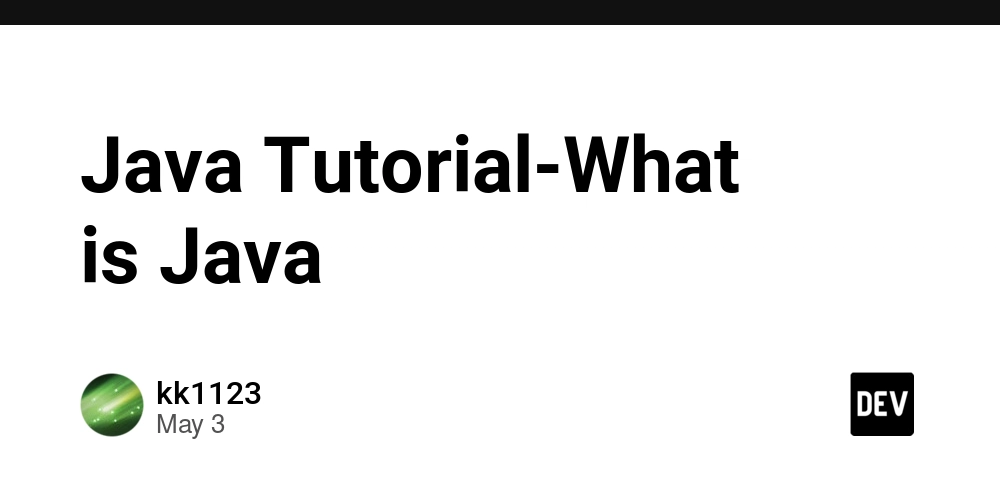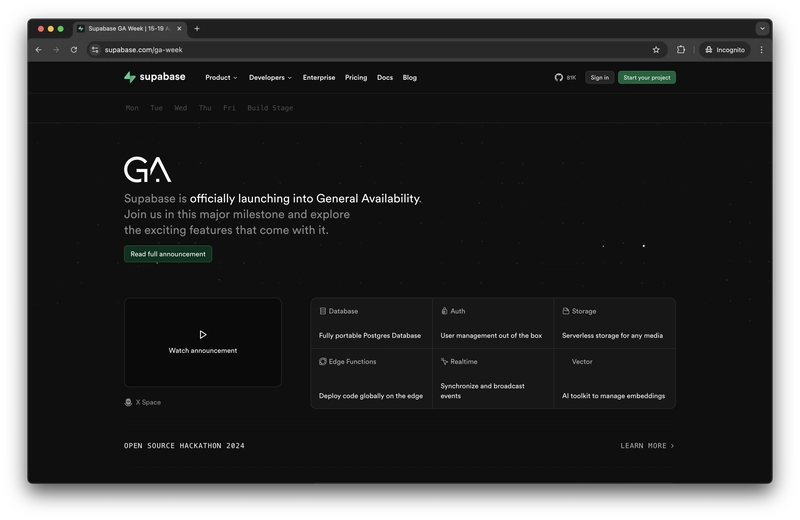How I Ended Up Writing DITA Decoded?
On January 7th, 2024, I committed to a project that would demand both technical discipline and creative resolve: authoring a book on Darwin Information Typing Architecture (DITA). The result was DITA Decoded — a structured, reference-grade manual built to reduce friction for developers and technical writers working with structured content systems. This wasn’t born out of sudden inspiration. It came from real friction. I was navigating DITA myself — parsing documentation, reverse-engineering implementations, and building repeatable documentation workflows. The gap was obvious: resources were either too abstract or hyper-specific. No single source mapped the complete terrain. So I decided to build one. Problem Identification: Why DITA Decoded? DITA is not casual documentation. It’s a semantic XML-based architecture that demands precision in authoring, metadata management, localization workflows, and automation. And yet, most available resources either assumed prior knowledge or skipped over real-world implementation challenges. What was missing was a clear guide that could: Introduce the fundamentals of DITA to developers and writers new to structured content Scale up to more advanced concepts such as keyrefs, conditional processing, and publishing pipelines Do all this without diluting technical accuracy This gap was the reason DITA Decoded had to exist. Project Planning: Structuring the Build I started with an outline — much like a software project. Think of it as a modular design system. The chapters were the modules, loosely categorized into: Core syntax and semantics (XML, specialization, content reuse) Authoring workflows (topic-based writing, maps, conditional filtering) Automation tooling (DITA Open Toolkit, versioning, output generation) Enterprise concerns (scalability, localization, version control) The objective wasn’t to create another textbook. It had to function like good technical documentation: searchable, scannable, reliable. Technical Debt & Learning Curve It didn’t take long to realize the size of this build. Writing a book on DITA meant verifying every line of code, re-running transformations, and modeling diagrams that explained conditional branches, relationship tables, and reuse strategies. Each page was a merge of technical deep dives, XML parsing logic, use case analysis, and accurate visual documentation. This wasn’t made easier by the fact that I was doing it while holding down a full-time job. Every late-night commit came with burnout risks. But skipping it would have meant leaving too many “TODOs” in the field. Versioning My Own Understanding One recurring bug in the process? Self-doubt. Why should someone read my book when others with 15+ years in technical documentation exist? Here’s what I eventually understood: Experience doesn’t always equate to clarity. My fresh take — as someone going through the onboarding pain themselves — allowed me to write from the perspective of the reader I once was. I knew exactly where the friction points lay, because I had just debugged them. I wasn't writing as an expert. I was writing for the next dev or tech writer trying to adopt DITA at scale. Quality Assurance: Ensuring Accuracy Every workflow, code block, and DITA map in the book had to work — not theoretically, but in production environments. The tolerance for error in technical writing is low. I spent significant time testing outputs through DITA-OT, breaking and rebuilding content maps, and checking rendering pipelines. The diagrams weren’t just visuals — they were part of the information architecture. Each one mapped to a use case or design pattern I’d seen in real systems. Motivation and Mental Overhead Midway through, I had to revisit my motivation. Why continue? Because building DITA Decoded wasn't about credentials or career leverage — it was about solving a problem I faced, and I knew others were facing it too. I wasn't building a book. I was building infrastructure: a repeatable system of understanding, deploying, and scaling structured content workflows using DITA. Lessons in Dev-Style Documentation Some hard-earned lessons that applied throughout: Shipping Matters More Than Scope: Don’t aim for a 100% comprehensive solution. Aim for 100% clarity on what you do cover. Fresh Perspective > Deep Experience: New adopters often explain things more intuitively than seasoned practitioners. Use that to your advantage. Community Feedback is a Feature: Peer reviews and beta readers caught edge cases and blind spots I couldn’t have spotted on my own. The Final Release By early January 2025, I wrapped production. On January 19th, I launched DITA Decoded across platforms including Amazon and Notionpress. Shipping the book felt like pushing a major feature live after a year in dev branches. The response was affirming — developers, writers, and information architects reache

On January 7th, 2024, I committed to a project that would demand both technical discipline and creative resolve: authoring a book on Darwin Information Typing Architecture (DITA). The result was DITA Decoded — a structured, reference-grade manual built to reduce friction for developers and technical writers working with structured content systems.
This wasn’t born out of sudden inspiration. It came from real friction. I was navigating DITA myself — parsing documentation, reverse-engineering implementations, and building repeatable documentation workflows. The gap was obvious: resources were either too abstract or hyper-specific. No single source mapped the complete terrain. So I decided to build one.
Problem Identification: Why DITA Decoded?
DITA is not casual documentation. It’s a semantic XML-based architecture that demands precision in authoring, metadata management, localization workflows, and automation. And yet, most available resources either assumed prior knowledge or skipped over real-world implementation challenges.
What was missing was a clear guide that could:
- Introduce the fundamentals of DITA to developers and writers new to structured content
- Scale up to more advanced concepts such as keyrefs, conditional processing, and publishing pipelines
- Do all this without diluting technical accuracy
This gap was the reason DITA Decoded had to exist.
Project Planning: Structuring the Build
I started with an outline — much like a software project. Think of it as a modular design system. The chapters were the modules, loosely categorized into:
- Core syntax and semantics (XML, specialization, content reuse)
- Authoring workflows (topic-based writing, maps, conditional filtering)
- Automation tooling (DITA Open Toolkit, versioning, output generation)
- Enterprise concerns (scalability, localization, version control)
The objective wasn’t to create another textbook. It had to function like good technical documentation: searchable, scannable, reliable.
Technical Debt & Learning Curve
It didn’t take long to realize the size of this build. Writing a book on DITA meant verifying every line of code, re-running transformations, and modeling diagrams that explained conditional branches, relationship tables, and reuse strategies.
Each page was a merge of technical deep dives, XML parsing logic, use case analysis, and accurate visual documentation.
This wasn’t made easier by the fact that I was doing it while holding down a full-time job. Every late-night commit came with burnout risks. But skipping it would have meant leaving too many “TODOs” in the field.
Versioning My Own Understanding
One recurring bug in the process? Self-doubt.
Why should someone read my book when others with 15+ years in technical documentation exist?
Here’s what I eventually understood: Experience doesn’t always equate to clarity. My fresh take — as someone going through the onboarding pain themselves — allowed me to write from the perspective of the reader I once was. I knew exactly where the friction points lay, because I had just debugged them.
I wasn't writing as an expert. I was writing for the next dev or tech writer trying to adopt DITA at scale.
Quality Assurance: Ensuring Accuracy
Every workflow, code block, and DITA map in the book had to work — not theoretically, but in production environments. The tolerance for error in technical writing is low. I spent significant time testing outputs through DITA-OT, breaking and rebuilding content maps, and checking rendering pipelines.
The diagrams weren’t just visuals — they were part of the information architecture. Each one mapped to a use case or design pattern I’d seen in real systems.
Motivation and Mental Overhead
Midway through, I had to revisit my motivation. Why continue?
Because building DITA Decoded wasn't about credentials or career leverage — it was about solving a problem I faced, and I knew others were facing it too.
I wasn't building a book. I was building infrastructure: a repeatable system of understanding, deploying, and scaling structured content workflows using DITA.
Lessons in Dev-Style Documentation
Some hard-earned lessons that applied throughout:
- Shipping Matters More Than Scope: Don’t aim for a 100% comprehensive solution. Aim for 100% clarity on what you do cover.
- Fresh Perspective > Deep Experience: New adopters often explain things more intuitively than seasoned practitioners. Use that to your advantage.
- Community Feedback is a Feature: Peer reviews and beta readers caught edge cases and blind spots I couldn’t have spotted on my own.
The Final Release
By early January 2025, I wrapped production. On January 19th, I launched DITA Decoded across platforms including Amazon and Notionpress.
Shipping the book felt like pushing a major feature live after a year in dev branches.
The response was affirming — developers, writers, and information architects reached out saying it helped them bridge gaps they’d struggled with for months. That made the effort worth it.
To Anyone Planning a Tech Book
Here’s what I’ll say to other devs or tech writers thinking about writing a technical book:
- Don’t wait until you “qualify.” If you’ve built something, debugged something, or learned something deeply — document it.
- Version early. Write drafts. Get feedback.
- Think in workflows. Every chapter should solve a real problem, not just describe a concept.
TL;DR
- Started on Jan 7, 2024 with the intent to demystify DITA
- Faced typical technical writing challenges: accuracy, clarity, real examples
- Shipped after 12+ months of writing, revising, and validating
- Launched on Jan 19, 2025 — and still evolving based on reader feedback
If you're a developer, technical writer, or engineer trying to scale documentation with structure, DITA Decoded might just be the framework guide you've been missing.












































































